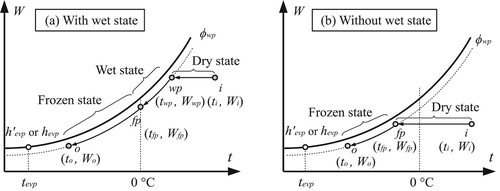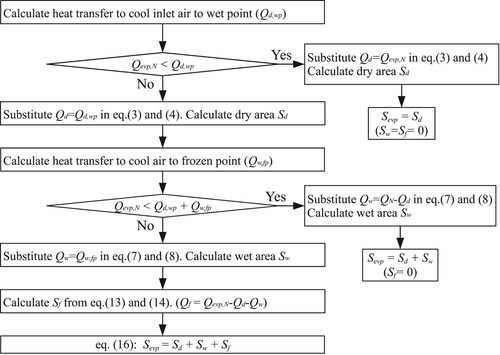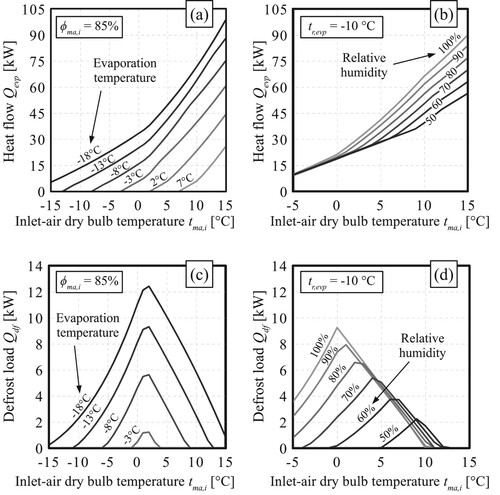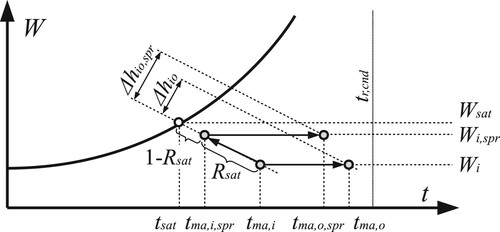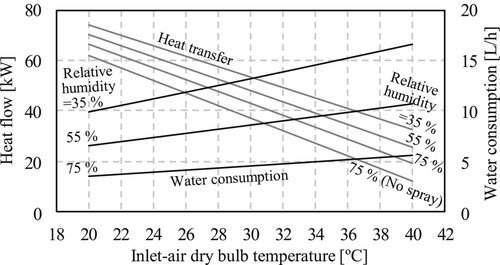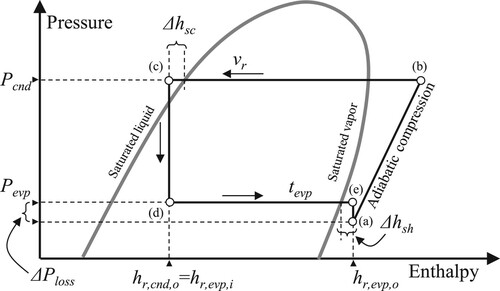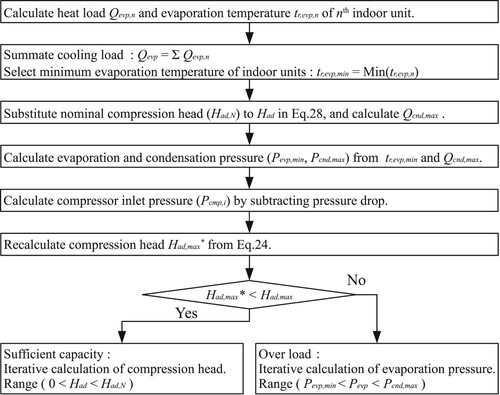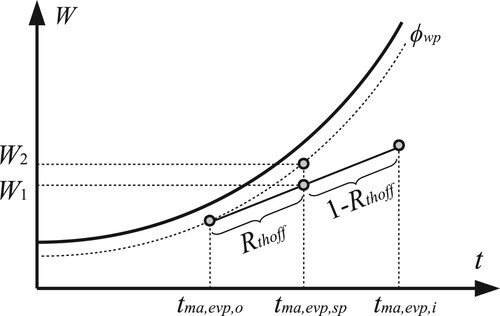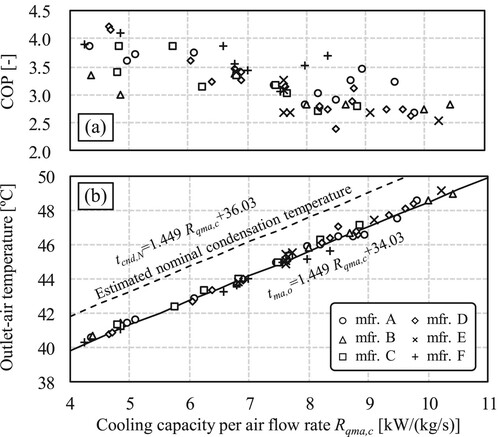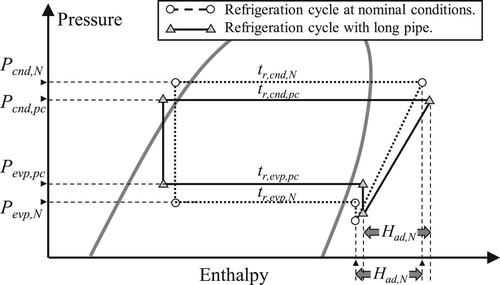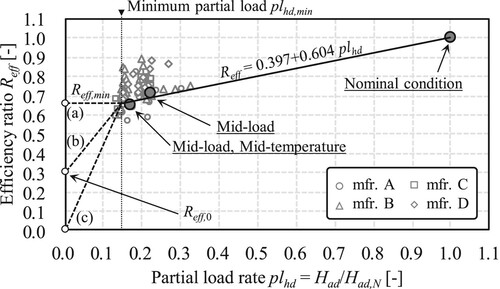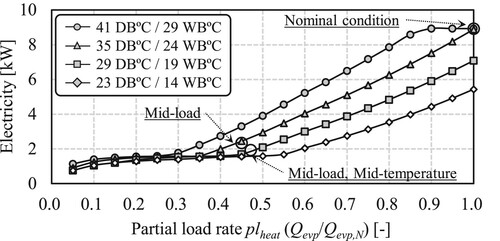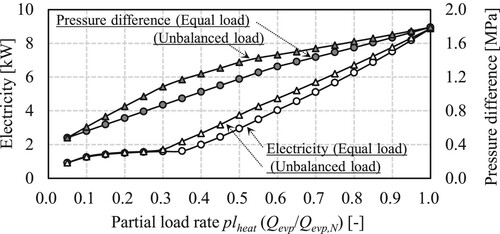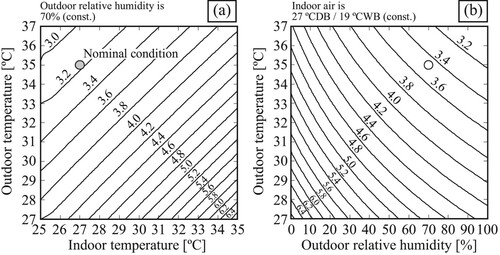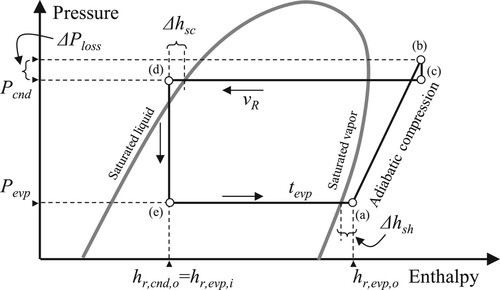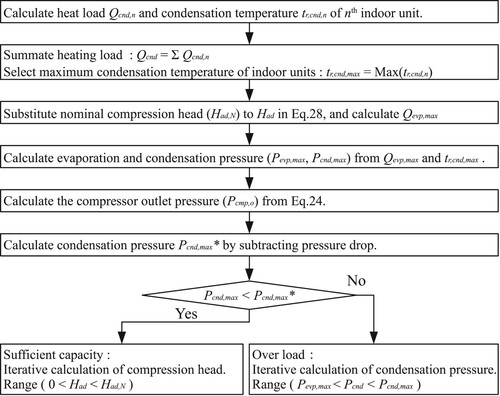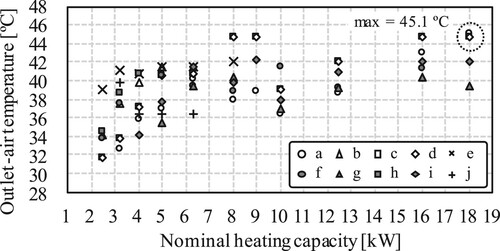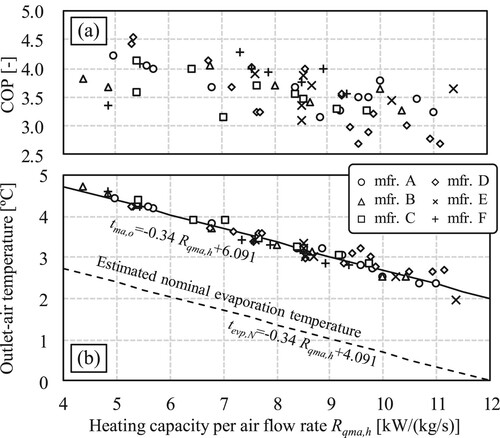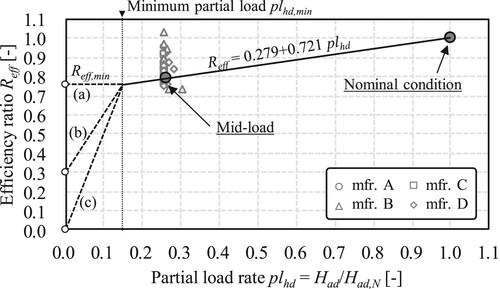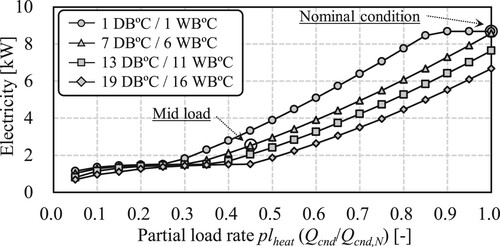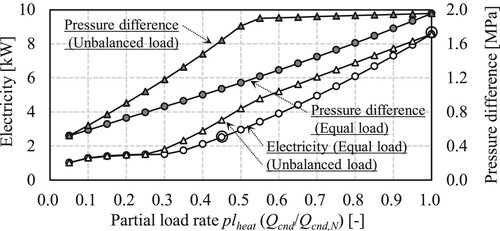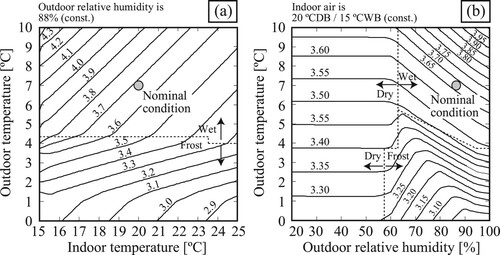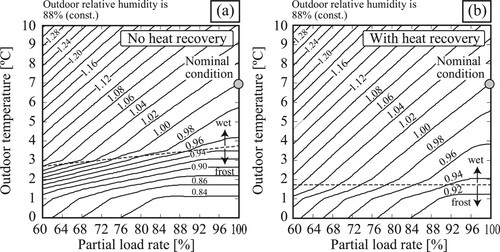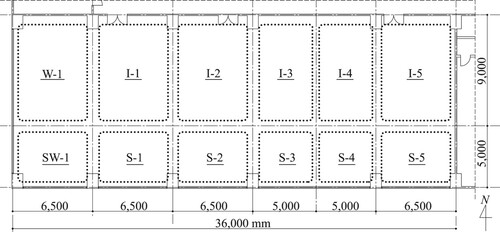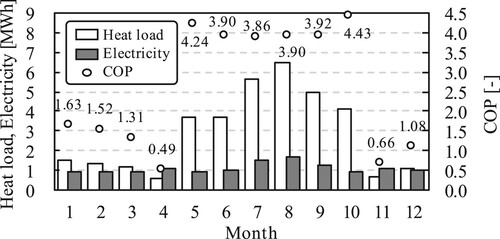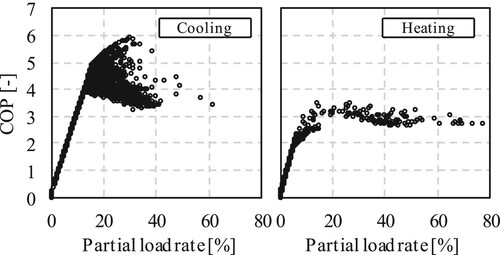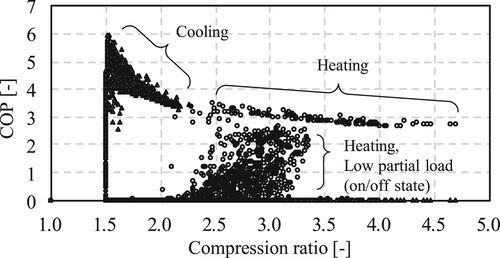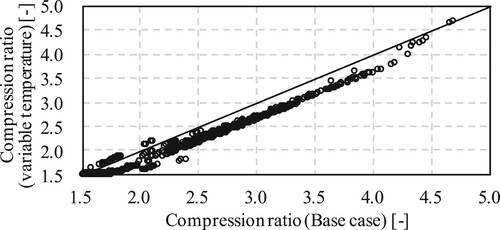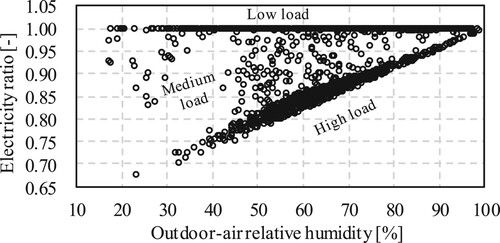Figures & data
Figure 1 Typical VRF system modelled in this study. (Modified from figures presented in SHASE (Citation2010)).

Table 1 Nominal specifications of the evaporator.
Table 2 Nominal specifications of the condenser.
Table 3 Boundary conditions of the VRF heat pump model.
Table 4 Information used to estimate the parameters of the cooling model.
Table 5 Estimated parameters of cooling model.
Figure 18 Relationship of pipe length and height difference between indoor and outdoor units and pipe length correction factor.
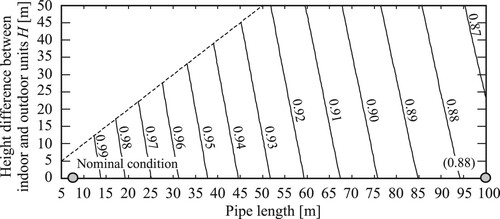
Table 6 Information used to estimate the parameters of the heating model.
Table 7 Estimated parameters of heating model.
Figure 27 Effect of pipe length and height difference between indoor and outdoor units on pipe-length correction factor.
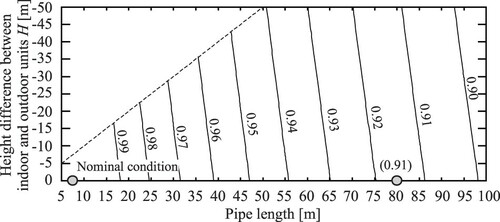
Table 8 Specifications of gas engine heat pump.
Table 9 Measured indoor unit heat load combinations and electricity (Cooling).
Table 10 Measured indoor unit heat load combinations and electricity (Heating).
Figure 30 Comparison between the actual measured values and the predicted values of electricity by simulation.

Table 11 Indoor-unit cooling capacities.
Table 12 Indoor-unit specifications.
Table 13 Outdoor-unit specifications.
Table 14 Simulation cases.
Table 15 Simulation results.
Table 16 Changes in compressor electricity consumption upon water spray.


